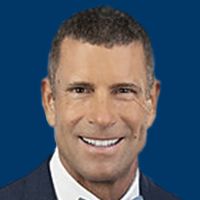Article
Tumor Growth Rate Associated With Outcomes in Sarcoma Treated With Immunotherapy or Targeted Therapy
Author(s):
December 14, 2020 — A link between tumor growth rate and clinical outcomes was established in patients with sarcoma who received treatment with immunotherapy or targeted therapy.

A link between tumor growth rate (TGR) and clinical outcomes was established in patients with sarcoma who received treatment with immunotherapy or targeted therapy, according to data from a retrospective analysis presented during the 2020 CTOS Virtual Annual Meeting.
Hyperprogressive disease (HPD) is a phenomenon of rapid TGR that has been reported to be associated with immunotherapy. Results from the analysis indicated that the median progression-free survival (PFS) in patients with HPD versus those without HPD had a hazard ratio (HR) of 7.90 (95% CI, 95% CI, 2.90-21.53; P <.001). Additionally, the median overall survival (OS) in patients with HPD was 3.9 months (95% CI, 2.5-5.2) versus 16.1 months (95% CI, 13.0-19.2) in those without HPD (HR, 9.35; 95% CI, 3.38-25.84; P <.001).
No interaction between HPD and the receipt of immunotherapy vs other therapy was observed.
For the retrospective analysis, investigators set out to evaluate the extent to which HPD exists for patients with sarcoma who received treatment with either immunotherapy or other therapies. Another objective was to determine whether any clinicopathological predictors can identify the subset of patients with HPD who experience worse outcomes.
The primary goal of the study was to evaluate the TGR in patients with sarcoma who were receiving immunotherapy or targeted treatment. The secondary objectives of the research are focused on the correlation of TGR on therapy with PFS and OS, HPV prevalence in the study population, and associations with patient clinicopathological features.
The retrospective review was conducted in patients with advanced sarcoma who participated in either immunotherapy or targeted therapy clinical trials at the Princess Margaret Cancer Centre. Patients were evaluated for TGR via serial CT scans prior to baseline, at baseline, and on several treatment time points.
Investigators computed TGR by using a published formula by Champiat et al 2017. Subsequently, the ratio between reference and experimental groups was calculated. To evaluate the predictive accuracy of HPD, investigators utilized the Cox proportional hazards analysis as a continuous variable; they also used a cutoff for TGR ratio percentage of greater than 50%. Statistical significance was determined to be P <.05.
A total of 146 patients underwent screening and received treatment with immunotherapy, targeted therapy, or combination chemotherapy with targeted therapy between July 2013 and August 2018. Forty patients were excluded from the analysis due to an inappropriate reference or experimental CT scans for TGR evaluation. Of the remaining 106 patients, 20 received immunotherapy, 54 received targeted therapy, and 32 received chemotherapy plus targeted therapy.
Among the 106 participants, the age range was 21 years to 86 years, with a mean age of 54 years. Fifty-four patients were female, while 46% were male. With regard to disease histology, 30% (n = 32) had liposarcoma (LPS), 24% (n = 26) had leiomyosarcoma (LMS), 8.5% (n = 9) had alveolar soft part sarcoma (ASPS), 7.5% (n = 8) had undifferentiated pleomorphic sarcoma (UPS), 6.6% (n = 7) had gastrointestinal stromal tumor (GIST), 3.7% (n = 4) had clear cell sarcoma, 2.8% (n = 3) had malignant peripheral nerve sheath tumor, 2.8% (n = 3) had high-grade endometrial stromal cell sarcoma, 2.8% (n = 3) had myxoid chondrosarcoma, and 10.3% (n = 11) had other. The ECOG performance status was 0 in 33% of patients and 1 in 67%.
Of the 18.8% of patients who received immunotherapy, 10.3% received monotherapy and 8.5% received a combination regimen. Approximately 81% of patients did not receive immunotherapy. Of these patients, 10.4% received doxorubicin plus antiangiogenic inhibitors and 18.8% received doxorubicin in combination with nucleopore inhibitors. Among those who received targeted therapy, 6.6% received Pan-kit inhibitors, 33% received nucleopore inhibitors, 3.8% had an antiangiogenic TKI, and 7.5% had MDM2/CDK inhibitors.
Fifteen percent (n = 3) of patients from the immunotherapy subset had HPD versus 2.3% (n = 2) in the non-immunotherapy subset. Overall, the incidence of HPD was 4.7%.
The TGR ratio increase was 144% in those with LMS who received single-agent immunotherapy, 84% in those with UPS who were given immunotherapy monotherapy, 71% in those with clear cell sarcoma and single immunotherapy, 61% in those with LMS who received chemotherapy and targeted therapy, and 57% in those with LPS who received targeted treatment.
Investigators also examined predictors for HPD with regard to age (<65 years vs ≥65 years, P =.096), ECOG performance status (0 vs 1, P =.33), sex (male vs female, P = 1.000), Royal Marsden Hospital score (0-1 vs 2-3, P =.33), immunotherapy (monotherapy vs combinations, P =.29), toxicity clinically significant adverse effects (yes vs no, P =.52), toxicity grade 3/4 (yes vs no, P = 1.000), and new lesions (yes vs no, P =.001).
A higher proportion of new lesions (yes vs no, P =.001) was observed among patients with HPD, but no association was established with regard to age (<65 years vs ≥65 years, P =.096), ECOG performance status (0 vs 1, P =.33), sex (male vs female, P = 1.000), Royal Marsden Hospital prognostic score (0-1 vs 2-3, P =.33), immunotherapy (monotherapy vs combinations, P =.29), grade 3/4 toxicity (yes vs no, P = 1.000), or clinically significant adverse effects (yes vs no, P =.52).
“HPD is associated with worse survival outcomes and may serve as a useful tool in the assessment of treatment futility during patient therapy,” the study authors concluded.
Reference
- Al-Ezzi E, Watson G, Veitch Z, et al. Impact of immunotherapy and targeted therapy on tumor growth rate in sarcoma. Presented at: 2020 CTOS Virtual Annual Meeting; November 18-21, 2020; Virtual. Poster #090. https://bit.ly/37UI42U.









